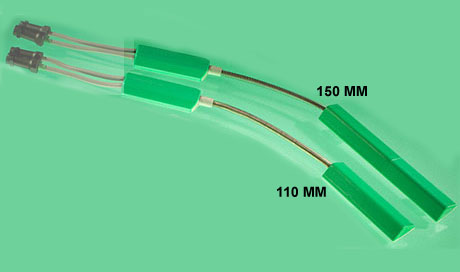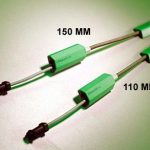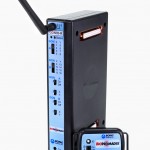Goniometers have a telescopic endblock that compensates for changes in distance between the two mounting points as the limb moves. The gauge mechanism allows for accurate measurement of polycentric joints. Goniometers attach to the body using TAPE2 medical adhesive tape.
BioNomadix goniometers and torsiometers are ideal for quick and accurate measurement of joint movement in multiple planes. Sensors are extremely robust, lightweight and flexible, and can be comfortably worn undetected under clothing, without hindering the actual movement of the joint. Twin-axis goniometers and single-axis torsiometers provide improved mechanical integrity and electrical performance.
The following list of typical uses is for guidance only…select sensor size such that the sensor is capable of reaching across the joint so that the endblocks can be mounted where least movement occurs between the skin and underlying skeletal structure.
- BN-GON-110-XDCR – elbow or ankle – flexion/extension, or dorsiflexion/plantarflexion and inversion/eversion
- BN-GON-150-XDCR – knee or hip – flexion/extension and valgus/varus, or flexion/extension and abudction/adduction
- BN-TOR-110-XDCR – neck – axial rotation
- BN-TOR-150-XDCR – forearm – pronation/supination
- BN-GON-F-XDCR – finger (DIP, PIP, MCP) or toe – flexion/extension
Suggested reading for additional information on goniometry
Legnani G, Zappa B, Casolo F, Adamini R, Magnani PL. A model of an electro-goniometer and its calibration for biomechanical applications. Med Eng Phys. 2000 Dec;22(10):711-22.







Stay Connected